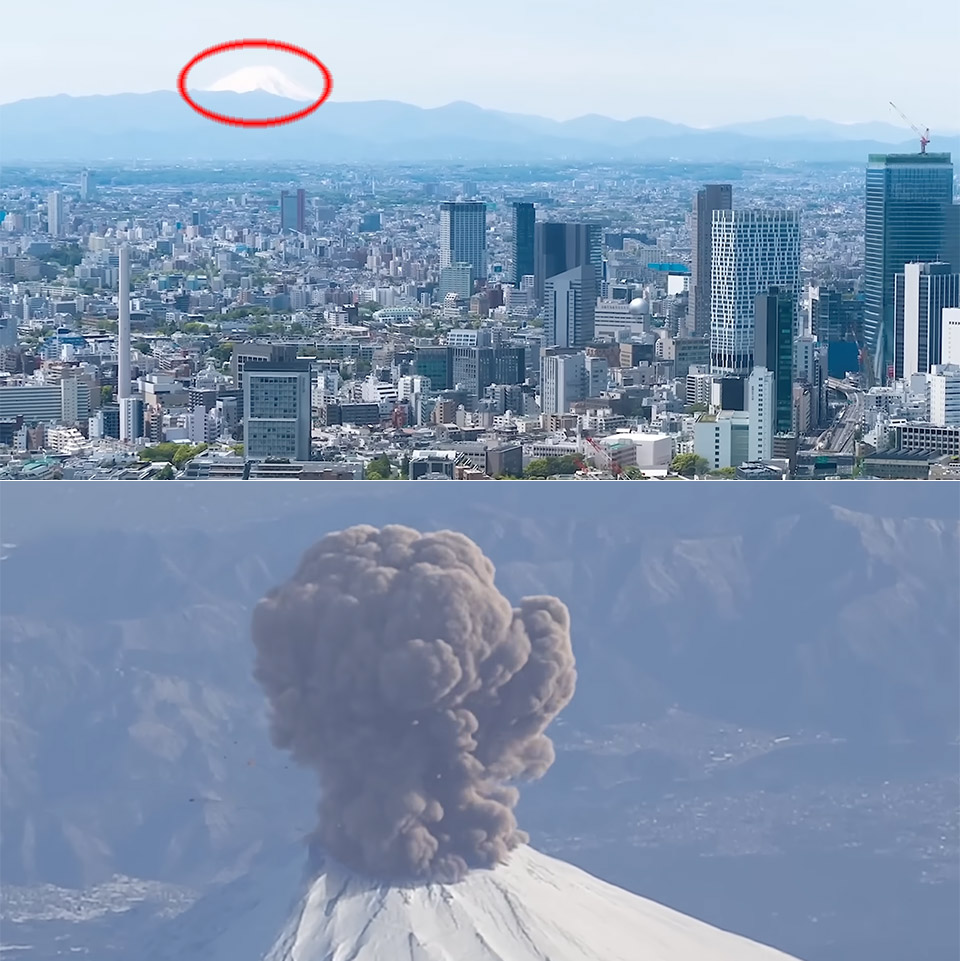Mount Fuji’s Simulated Eruption Shakes Tokyo, Gives Japan an AI-Powered Wake-Up Call


Mount Fuji, Japan’s 12,300ft stratovolcano, has been dormant for almost three centuries and is a popular backdrop for photos as well as cultural worship. But on August 26, 2025, the Tokyo Metropolitan Government and Japan’s Cabinet Office issued a chilling reminder of its fury. They released AI-generated videos showing a catastrophic eruption and plunging Tokyo’s 37 million people into an ash-choked hell.
Japan is on the Pacific Ring of Fire, a volatile arc of seismic and volcanic activity that is home to 111 of the world’s 1,500 active volcanoes. Mount Fuji has been dormant since its last eruption in 1707. That eruption, triggered by an 8.6-magnitude earthquake, blanketed Edo (modern-day Tokyo) with ash, destroyed crops and led to famine. Today, with Tokyo’s metropolis just 60 miles away, the stakes are higher. The videos show ash clouds engulfing the city in hours, transportation grinding to a halt, power lines snapping under the weight of wet ash and food supplies dwindling. One simulation estimates 1.7 billion cubic meters of ash will fall, with 490 million cubic meters piling up on roads and buildings that could collapse. The economic cost? Up to 2.5 trillion yen or $16.6 billion.
Sale

LEGO Art Hokusai The Great Wave Framed Japanese Wall Art Building Set – Unique Wall Decor for Home, Room,…
- Bring one of the most iconic artworks of the last two centuries to life with the LEGO Art Hokusai – The Great Wave set, a DIY framed wall art piece
- This home decor craft kit for adults contains 1,810 pieces, 6 canvas bases, 2 hangers elements and a decorative tile with Hokusai’s signature
- Relax while building this LEGO wall Art set – scan the QR code to listen to the tailor-made soundtrack end enjoy a rewarding mindful experience
The Tokyo Metropolitan Government’s video opens with a woman on a busy street, her phone buzzing with an eruption alert. “The moment may come without warning,” the narrator says, as the scene shifts to Mount Fuji spewing massive plumes of smoke. Ash falls in Tokyo within one to two hours, with accumulations of 2 to 10cm in some areas. The video shows Shibuya’s famous crossing buried under a gray haze, people struggling to breathe and trains stalled as ash clogs the tracks. Another video from the Cabinet Office, released a day later, shows up to 70cm of ash in parts of Kanagawa Prefecture, crushing roofs and snarling highways. Both videos end with a call to action: stockpile canned food, first-aid kits, water and flashlights. “We need to arm ourselves with facts and prepare for disaster in our daily lives.”
But officials say the simulations are not a warning of an imminent eruption. The Tokyo government and Cabinet Office say there is no sign of Fuji erupting. University of Tokyo professor Naoya Sekiya, a risk communication expert, says these videos are part of Japan’s long-term disaster preparedness.
Mount Fuji’s geological setting gives the simulations extra weight. Sitting at the intersection of three tectonic plates—Pacific, Eurasian and Philippine—it’s activity is driven by the subduction of the Pacific plate. Historically, Fuji erupted every 30 years before going quiet after 1707. That eruption, the largest in recorded history, spewed out tephra that darkened Edo’s skies and disrupted life for weeks.
[Source]
Mount Fuji’s Simulated Eruption Shakes Tokyo, Gives Japan an AI-Powered Wake-Up Call
#Mount #Fujis #Simulated #Eruption #Shakes #Tokyo #Japan #AIPowered #WakeUp #Call







